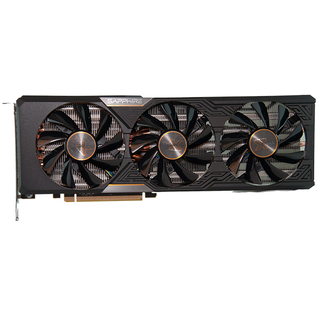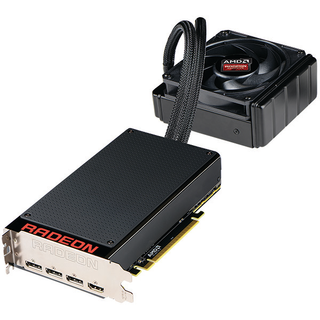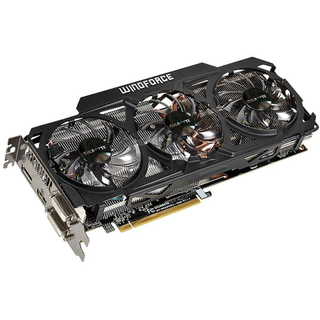Early Verdict
AMD’s cut down Fiji GPU has proved to be great competition for Nvidia’s GTX 980 and even knocks on the door of the more expensive GTX 980 Ti in some tests. Even with fewer texture units and shader cores the Radeon R9 Fury performs very close to as good as the full blown Fury X does. Sapphire has done an excellent job creating a robust cooling solution to keep this power hungry beast cool, while maintaining reasonably quite fan noise. The coil whine issue appears to be isolated to our sample, so judgement on that topic has been reserved until such time as we may test another copy.
Pros
- +
Efficient cooler • Back plate • Quiet fans • Excellent option for QHD gaming
Cons
- -
Power • Overclocking • Size
Why you can trust Tom's Hardware
Introduction
At the end of June, AMD revealed its latest GPU, Fiji, some two years after it unveiled Hawaii. We covered the company's new graphics flagship extensively in our Fury X launch review. Fury X gave Nvidia's GeForce GTX 980 Ti a run for its money, falling a little short at 2560x1440 and coming out a bit ahead at 3840x2160 thanks to its use of high bandwidth memory (HBM) instead of GDDR5.

What's more, the Fury X's power requirements were surprisingly more pedestrian than Hawaii had trained us to expect. And, of course, its price was comparable to Nvidia's 980 Ti offering. The shorter-than-usual board comes with a Cooler Master-sourced liquid cooler, too.
That was Fury X. You can read more about HBM in our full write-up, as well as our further analysis of the Fury X power consumption and its pump noise. The latter was the cause of much concern and speculation; the questions have been answered though (AMD blames the issue on glue inside the cooler tubing), and promises have been made regarding card returns from those unhappy with the acoustic situation.
But today's review focuses on Fury, a cut-down version of Fury X, aimed more at the Nvidia GeForce GTX 980, at least from a pricing standpoint. There is no AMD reference card to evaluate. Rather, the company worked with its long-time partner Sapphire to produce the first add-in board. We are led to believe that there is a similar card from Asus making its rounds.
AMD’s specification for Fury includes a 1000MHz GPU clock. The lesser Fiji implementation employs 3584 shader cores rather than the 4096 active for Fury X. Additionally, you get 224 texture units where Fury X has 256. AMD also adds a thermal limiter that will throttle the GPU if it reaches too high of a temperature. The Fury X has no such ceiling, which in theory will affect how high this card can be overclocked.
Technical Specifications
MORE: Best Graphics Cards For The MoneyMORE: All Graphics Articles
MORE: Graphics Cards in the Forum
Unlike AMD’s flagship, partners building Fury cards are not just allowed to design their own coolers, but are required to. AMD does not specify a reference thermal system for the air-cooled Fury, leaving the door open for companies like Sapphire to create their own advanced designs.
Partners are also free to sell factory-overclocked variants of Fury, and that's exactly what Sapphire is doing. The Fury Tri-X we were sent to test is the company’s overclocked version. The memory on this card is stock, but the GPU enjoys a 40MHz bump over reference.
AMD plans to sell the Radeon R9 Fury for $549, which is $10 to $20 over most GTX 980s, undercutting a majority of overclocked 980s. Sapphire smartly keeps the price of its reference clocked Fury Tri-X at $549, and offers the overclocked model for $569, putting it in the path of many overclocked 980 cards.
We’ve already seen what the liquid-cooled Radeon R9 Fury X can do. Can an air-cooled Fiji GPU keep up with its bigger brother?
Briefly, Sapphire had a very limited number of these cards, so we were limited to just three days with it. Igor also got a card in Germany, very late in the game, but he was able to do his normal yeoman's work testing thermals, power and audio. Also, AMD announced a new driver less than 48 hours before the Fury's embargo lifted. By then, the U.S. team's sample was on its way back. Tom's Hardware DE still had their board though, and they helped spot test the 15.7 driver. The good news is that we didn't measure any performance pick-up across our suite.
Kevin Carbotte is a contributing writer for Tom's Hardware who primarily covers VR and AR hardware. He has been writing for us for more than four years.
-
Troezar Some good news for AMD. A bonus for Nvidia users too, more competition equals better prices for us all.Reply -
AndrewJacksonZA Kevin, Igor, thank you for the review. Now the question people might want to ask themselves is, is the $80-$100 extra for the Fury X worth it? :-)Reply -
vertexx When the @#$@#$#$@#$@ are your web designers going to fix the bleeping arrows on the charts????!!!!!Reply -
ern88 I would like to get this card. But I am currently playing at 1080p, but will probably got to 1440p soon!!!!Reply -
confus3d Serious question: does 4k on medium settings look better than 1080p on ultra for desktop-sized screens (say under 30")? These cards seem to hold a lot of promise for large 4k screens or eyefinity setups.Reply -
rohitbaran This is my next card for certain. Fury X is a bit too expensive for my taste. With driver updates, I think the results will get better.Reply -
Larry Litmanen ReplySerious question: does 4k on medium settings look better than 1080p on ultra for desktop-sized screens (say under 30")? These cards seem to hold a lot of promise for large 4k screens or eyefinity setups.
I was in microcenter the other day, one of the very few places you can actually see a 4K display physically. I have to say i wasn't impressed, everything looked small, it just looks like they shrunk the images on PC.
Maybe it was just that monitor but it did not look special to the point where i would spend $500 on monitor and $650 for a new GPU.




